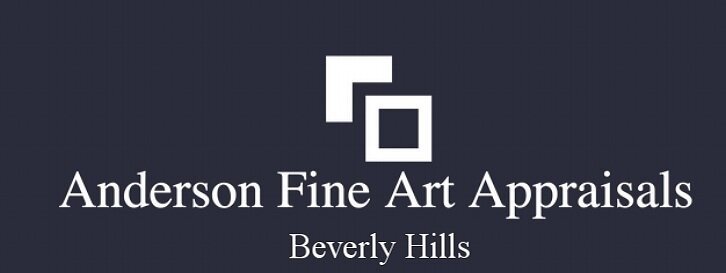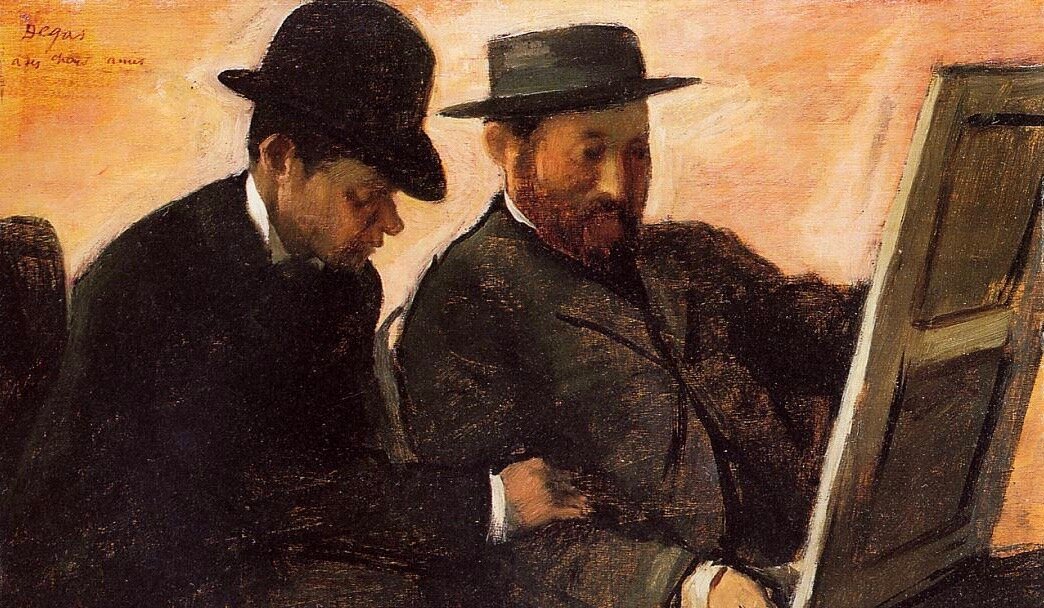Kathryn Tully from Priceless writes: One of the bright spots of last year, in the art market, at least, was that a new generation of young and diverse artists were in the spotlight. Collectors, galleries and museums alike wanted to support the work of new and emerging artists, and belatedly, of many more women artists and artists of color.
How to Make Sure You’re Not Buying a Forgery
Some excellent advice from our friends at Artsy on some basic red flags to watch to avoid a costly mistake. I am personally aware of collectors who have not reported buying a fake because of the embarrassment. Don’t let this happen to you!
“When art forgeries make headlines, the stories behind their unmasking often involve meticulous examination of previously overlooked details and forensic labs testing materials. And while these techniques certainly help identify fakes, they’re not always necessary. In fact, according to appraisers, lawyers, and other experts, there are a number of much simpler (and cheaper) strategies that collectors can use to help identify a potential fake before it’s too late.”
What to Do If You Inherit an Art Collection
If you are lucky enough to be included in the will hooray!. The advice of a qualified appraiser at an early stage is key. If the art has significant value great but if it doesn’t, you may be saddled with many costs including insurance, transport, conservation, framing to name just a few. Read on in this Artsy article for the full story :
Inheriting art can be a very educational and meaningful experience, helping you to learn more about your family and about the art world. On the other hand, assessing which pieces you’d like to part with and knowing how to do so can create a world of stress. So whether you’ve inherited one artwork or hundreds, here are some tips for figuring out what to do with it all.
What first?
Before figuring out what you’re going to do, first assess what you have. Some art collectors have the foresight to get their collections appraised, and may even have an inventory with the locations of artworks around their house and photographs of each piece, according to Daile Kaplan, vice president of the auction house Swann Galleries.
Van Gogh Heist Focuses Collectors’ Attention on Security Systems
Stolen Van Gogh Painting Prompts Art Collection Security Review
Bloomberg reports that Covid -19 has created opportunities for high value thefts including fine art.
The break-in lasted just minutes.
At 3 a.m. on Monday, a thief -- or thieves -- forced open the glass doors of the Singer Laren museum in the Netherlands and headed straight for its prize exhibit: a Van Gogh oil painting. By the time police arrived, the burglars were gone, along with the artwork.
In New York, where museums and galleries have shuttered and art-lined apartments and townhouses stand empty, some are taking added precautions. Jordan Arnold, head of art risk advisory services at K2 Intelligence FIN, said he’s had numerous conversations recently with clients about security concerns. Lawyer Thomas Danziger said one client, a jeweler, has removed everything from the store in case of theft. Others have put their artwork into storage.
Read the full story here: https://www.bloomberg.com/news/articles/2020-04-03/van-gogh-heist-focuses-collectors-attention-on-security-systems
Join AFAA and the Appraisers Association of America for this Special Event!
Ever wonder what makes one painting by an artist more valuable than another? While there can be many factors, subject matter is always key! How has subject preference by collectors changed over time and impacted prices for 19th Century Art today? Join us to find out on 3-31-20. Follow this link to register:
https://www.appraisersassociation.org/index.cfm?fuseaction=Calendar.eventDetail&eventID=978
How Old Master Sales Are Like the Tortoise and the Hare
Lucas van Leyden’s early-16th-century black chalk drawing of a young man sold for 11.5 million pounds, or about $14.6 million, at Christie’s.
In an uncertain economic environment Old Masters have long been considered a “safe” bet. This December article from the New York Times gives a timely overview.
The memories of Beyoncé, Victoria Beckham and othersdisplaying a fascination over the summer with European old masters have faded. Auctions of such works have once again reverted to traditional type.
At least, that was the impression in London this week when Sotheby’s and Christie’s held their regular December sales of pre-Victorian art. The wall colors might have been different (black at Sotheby’s, blue at Christie’s), but these latest old master offerings — featuring a “Head of Christ” by Rembrandt, portraits by Anthony Van Dyck and Frans Hals, and landscapes by the Brueghel family — were put on show much the same way they have been for centuries.
“We’re the tortoise to contemporary art’s hare,” said Johnny Van Haeften, a London-based dealer in old masters. He acknowledged that collecting fashion had shifted toward more recent artworks, but added that old masters represented an alternative investment strategy. “It’s about preservation of capital, he said. “It’s safe, and people are realizing what good value they are.”
The Specialized Art of the Appraisal- NY Times
I recently came across the excellent article from the New York Times wealth management archive. My takeaway: choose an appraiser who has extensive expertise in your specific property! This is particularly true if the item has significant value. While any appraiser who is properly trained and certified can produce a credible report with the proper format and cataloguing, values could vary significantly (either high or low) if the specific expertise in the subject property is lacking.
Authenticity and the Appraiser
Ralph Osman wrote this thorough and thoughtful essay on authenticity and appraisers several years ago. I’m pleased to share it again with our followers here.
Art appraisers are often asked to appraise art objects and antiques with no guarantee of the item’s authenticity. In some cases the owner of an object believes he knows what he owns, in other cases he hopes the appraiser can help identify the object. In a few rare cases, the owner may hope to have something appraised as authentic when in fact he knows it is a fake or forgery. Authentication, the process of accurately identifying on object, is important because of its potential impact on the value of the work of art being appraised.
When an art appraiser has reason to question the correct identity of something he is appraising, he often calls on an expert in the field to authenticate the object. By doing so, the appraiser is employing “due diligence” in valuing an object. “Due Diligence” usually translates into hard work, research, a bit of detective work, and ultimately it means honesty and therefore complete disclosure.
The appraiser’s responsibility in this process is to alert the client to the problem, provide advice regarding experts, record and interpret the information obtained from experts and other sources, and, finally, to determine the object’s probable market value.
The question of authenticity really hinges on “adequate identification” as stipulated by the Appraisal Standards Board of the Appraisal Foundation in Washington, D.C., which regulates the appraisal profession. One of the best means of establishing adequate identification is to have clearly documented provenance for the work of art. Provenance is a history of ownership for the piece, ideally from the time it left the artist’s studio to the time it entered the subject collection. Recording and interpreting the history of ownership, exhibition and past research done on a work of art is part of the appraiser’s responsibility in reaching a value conclusion. Appraisal is not guess work. It is the result of assembling hard facts and then interpreting them.
The quick answer to the question of whether an art appraiser is responsible for determining “authenticity” is a qualified “yes.” As a function of the requirement of “accurate identification” and of the legal principle of “due diligence,” along with professional ethics involving a “standard of care,” the appraiser must exercise reasonable care and produce substantial evidence to justify the value conclusion.
The best policy - for the appraiser as well as the client - is that of complete disclosure. One nationally prominent appraiser and a regular adviser and expert witness for the IRS, the U.S. Customs and major insurance companies says with regard to disclosure, “...tell them everything you know and tell them everything you don’t know.” Inevitably there will be situations when the authenticity of a piece will be disputable. In such cases the appraiser must use “due diligence” and completely disclose his procedures, keep accurate records, build a convincing case for his conclusion and hope he is right.
Many collectors wonder when and if they should have artwork authenticated. For older works of art, where the provenance is not entirely clear, and where the dollar value may be high, it is advisable to have an authentication on record. To achieve this, the best thing a collector can do is to engage the appraiser with the best credentials, the least potential conflict of interest and the best client referrals. Although art appraisers are not licensed, the best are certified and tested by several appraisal associations. Membership in such an organization, while it cannot guarantee an appraiser won’t make a mistake, does guarantee that the appraiser knows the proper procedures, has gone through peer review and adheres to strict ethical guidelines.
Guarantees: the next big art market scandal?
Third-party auction deals have made some people very rich—but they may be bad for the market in the long run
I saw this super article from the Art Newspaper that shines a light on this murky corner of the art market.
Third-party guarantees at auction—the art market’s hybrid of a risk hedge and a speculative gamble—are on track to hit an all-time high of around $2.5bn in 2018. On the face of it, guarantees offer a high level of certainty: the auction house secures a consignment and the seller receives a minimum price, whatever the outcome of the sale. But after the 2008 financial crisis, when sales tumbled and in-house guarantees forced auction houses to pay out large sums to consignors, they all but disappeared between 2008 and 2010.
Read more: https://www.theartnewspaper.com/news/guarantees-the-next-big-art-market-scandal
Why Is Art So Expensive?
Here’s a great article from Vox this week on how the art markets parse value.
https://www.vox.com/the-goods/2018/10/31/18048340/art-market-expensive-ai-painting









